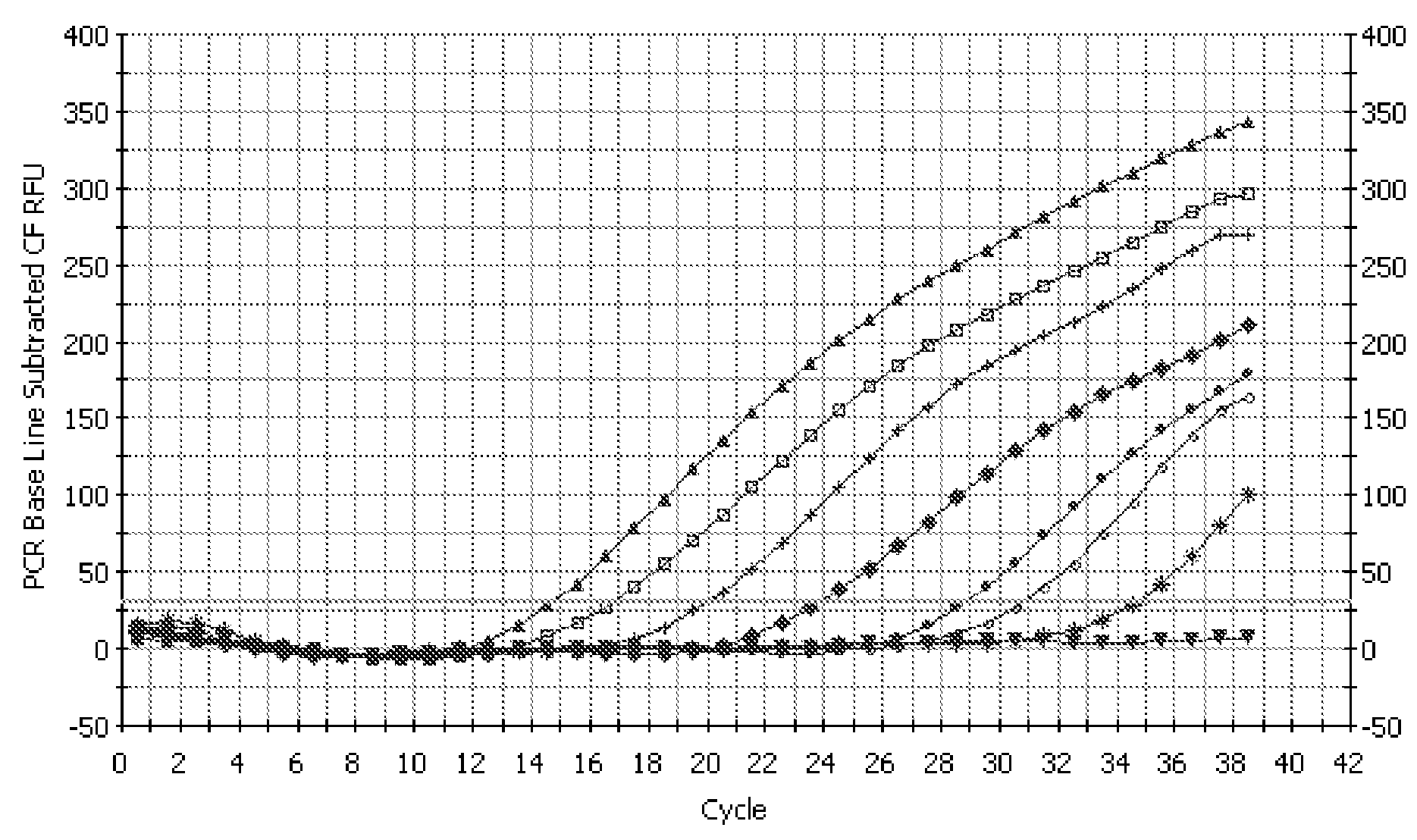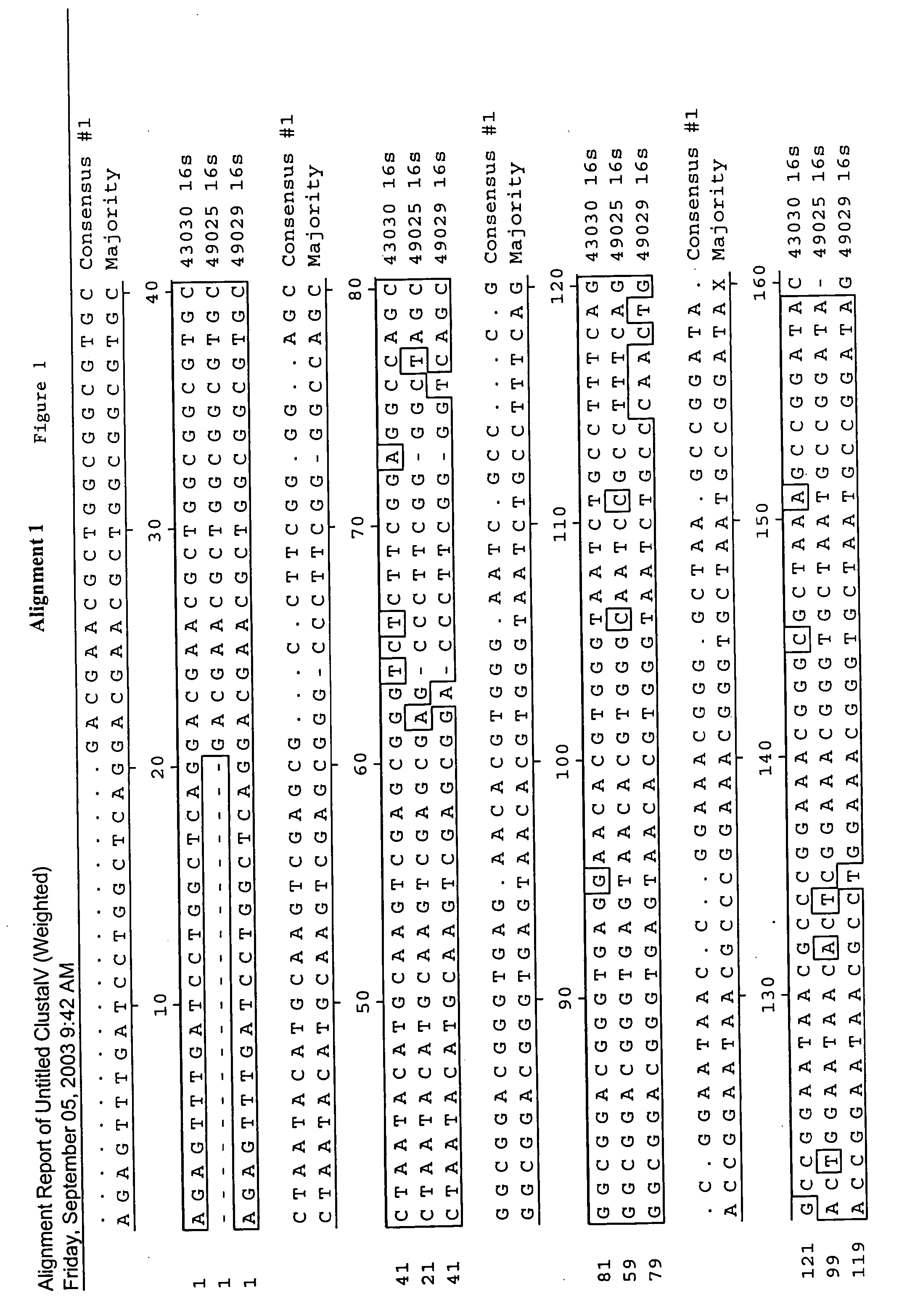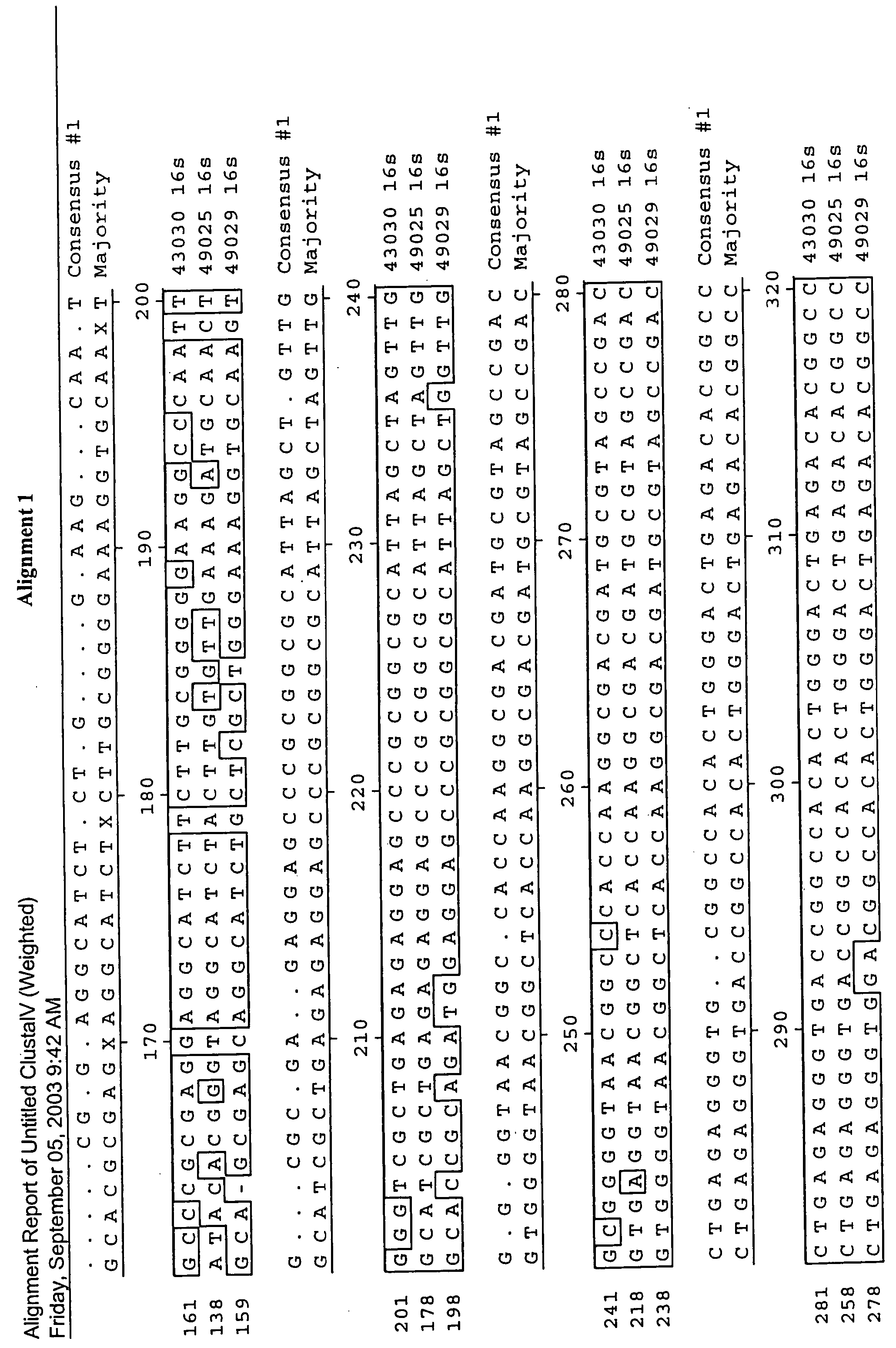Rapid Detection of Microorganisms
a microorganism and rapid detection technology, applied in the field of rapid detection of microorganisms, can solve the problems of affecting the quality of acidic fruit juice, alicyclobacilli are an increasingly frequent spoilage problem, and significant financial loss to the food industry
- Summary
- Abstract
- Description
- Claims
- Application Information
AI Technical Summary
Problems solved by technology
Method used
Image
Examples
example 1
[0127]In this study, the 16s rDNA sequences of A. acidocaldarius, A. cycloheptanicus, and A. acidoterrestris were used as models for the development of specific primers and a fluorogenic probe to be used in a real-time PCR assay. 16s rDNA was isolated from ATTC strains 43030, 49025, and 49029, then cloned into vectors, transformed into competent cells, and purified for sequencing. Following sequencing, the 16s rDNA sequences of the three strains were analyzed for the development of oligonucleotide primers and a fluorescent probe. These primers and probe were used in a real-time PCR detection system where specificity and sensitivity tests were performed in media as well as beverage systems. This rapid detection system is unique because it can specifically detect not only the three original Alicyclobacillus species, but also detects newer species of Alicyclobacillus because of the genus-level 16s rDNA conservation of the priming sequences. This system can greatly benefit the food indu...
example 2
[0136]A real-time PCR based rapid system was developed for detecting spoilage Alicyclobacillus spp. in foods. A common gene of Alicyclobacillus spp. encoding squalene-hopene cyclase, a key enzyme involved in hopanoid biosynthesis, was targeted for specific primers and probe development. Using the combination of the primers and probe, specific detection of the presence of representative strains from Alicyclobacillus spp. was achieved in the Taqman-based real-time PCR assay without cross-reacting with other food-borne bacteria. The presence of around 100 cells in collected samples can be detected within several hours.
[0137]Food spoilage causes significant financial loss to the industry. Every year, about 10% of our food supplies are lost due to spoilage and a significant portion of the problem is because of the presence of spoilage microbial agents, particularly molds, yeasts, and bacteria capable of surviving moderate heat- and acidic-treatments. Due to the limitation of applying ext...
example 3
Yeast Genomic DNA Extraction Protocol
[0159]Innoculate yeast, overnight; Centrifuge 10,000 rpm for 10 mins; Discard supernatant, add 600 ul Sorbital buffer (1 M Sorbital, 100 mM EDTA, 14 mM B-mercaptoethanol, 30 ul 20 mg / ml lyticase) in pellet, vortex, room temperature for 30 min; Centrifuge 10,000 rpm for 5 min; Add 180 ATL (Qiagen DNAeasy kit) and 20 ul proteinase K (Qiagen DNAeasy kit) to pellet and vortex; 55°. for 1 h, add 200 ul AL (Qiagen DNAeasy kit), 70°. for 10 min; 200 ul Ethanol, vortex, apply to DNeasy spin column.; centrifuge 10,000 rpm for 1 min, discard flow-through add 500 ul Buffer AW1 (Qiagen DNAeasy kit), spin for 1 min; add 500 ul Buffer AW1 (Qiagen DNAeasy kit), spin for 3 min; add 100 ul AE buffer (Qiagen DNAeasy kit), spin for 1 min.
Mold Genomic DNA Extraction Protocol:
[0160]Innoculate Mold in PDB; 3 days later, centrifuge 10,000 rpm for 10 min; add 500 ul Mold extraction buffer (1% CTAB, 1.4 M NaCl, 100 mM Tris, 20 mM EDTA, pH 8.0) to pellet; 100 ul glass bea...
PUM
| Property | Measurement | Unit |
|---|---|---|
| Fraction | aaaaa | aaaaa |
| Electrical conductance | aaaaa | aaaaa |
| Electrical conductance | aaaaa | aaaaa |
Abstract
Description
Claims
Application Information
 Login to View More
Login to View More - R&D
- Intellectual Property
- Life Sciences
- Materials
- Tech Scout
- Unparalleled Data Quality
- Higher Quality Content
- 60% Fewer Hallucinations
Browse by: Latest US Patents, China's latest patents, Technical Efficacy Thesaurus, Application Domain, Technology Topic, Popular Technical Reports.
© 2025 PatSnap. All rights reserved.Legal|Privacy policy|Modern Slavery Act Transparency Statement|Sitemap|About US| Contact US: help@patsnap.com



